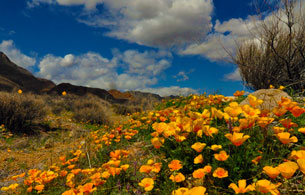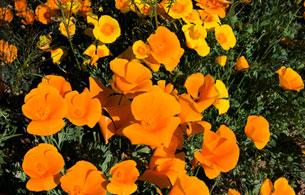- general information
- patient information
- Periodontal Overview
- ––––––––––––––––––––––––––––––––––
- Periodontal Disease and Heart Disease
- Diabetes and Periodontal Diseases
- Periodontal Disease Risk Factors
- Periodontal Complications
- Oral Cancer
- • Biopsy
- Maintaining Periodontal Health throughout a Woman's Lifetime
- Other Diseases and Their Relationship to Periodontal Disease
- Heart Disease: Precautions to be Taken Before Dental Treatment
- Poor Nutrition and Periodontal Disease
- ––––––––––––––––––––––––––––––––––
- What is "Good Oral Hygiene"?
- How to Brush
- How to Floss
- How to Care for Sensitive Teeth
- Hygiene Products
- • Toothbrush Care
- ––––––––––––––––––––––––––––––––––
- New Patient FAQs
- First Visits FAQs
- non-surgical periodontal care
- periodontal therapies
- Traditional Pocket Reduction Therapy
- • Bone Grafting
- ––––––––––––––––––––––––––––––––––
- PerioLase™ LANAP Therapy
- ––––––––––––––––––––––––––––––––––
- Cosmetic Surgery to Improve the Appearance of Your Smile
- • Crown Lengthening to Improve the Esthetics of Your Smile
- • Soft Tissue Grafting to Address Gingival Recession (Root Coverage Grafting)
- Platelet Rich Plasma (PRP)
- Crown Lengthening to Repair a Damaged Tooth
- Exposure / Bracketing of Impacted Tooth
- • Procedure Description for Exposure/Bracketing of Impacted Tooth
- ––––––––––––––––––––––––––––––––––
- Pocket Reduction Surgery FAQs
- Other Therapies FAQs
- dental implants
- Introduction to Dental Implants
- • Single Missing Tooth
- • Two or More Missing Teeth
- • Current Denture User
- • Benefits of Dental Implants
- ––––––––––––––––––––––––––––––––––
- CT Scanner & Comprehensive Implant Planning
- Conscious I.V. Sedation: Is It Right for You?
- ––––––––––––––––––––––––––––––––––
- Socket Preservation Techniques
- Ridge Augmentation and Bone Grafting
- Sinus Graft
- Platelet Rich Plasma
- Routine Implant Maintenance
- our doctors & staff
- office information






Home
Dental Implants
- Introduction to Dental Implants
- • Single Missing Tooth
- • Two or More Missing Teeth
- • Current Denture User
- • Benefits of Dental Implants
- CT Scanner & Comprehensive Implant Planning
- Conscious I.V. Sedation: Is It Right for You?
- Socket Preservation Techniques
- Ridge Augmentation and Bone Grafting
- Sinus Graft
- Platelet Rich Plasma
- Routine Implant Maintenance
Two or More Missing Teeth
Patients who are missing more than one tooth in a space often experience difficulties replacing their teeth with natural looking dental restorations. Most of these spaces include areas where at least one tooth was lost many years earlier and subsequently, the bulk or shape of the jawbone has changed with time. This usually leaves a “caved in” depression that is hard to restore with crowns that do not look “long and unattractive”. Dental implants and “modern bone regeneration techniques’ finally provide an “Answer” for these problems by first providing surgical techniques to replace the missing bone and following with current techniques to place dental implants in the new bony foundation that replace the missing teeth and prevent the newly developed bone from “melting away” again.
If you would like to replace your missing teeth, your initial consultation with Dr. Caldwell and Dr. Dimmitt will start with a careful assessment of how much supporting bone is left in the open spaces where your teeth are missing. Studies show that up to 40% of the width of the bony ridge that supported your original teeth is lost in the first three years after a tooth is extracted, due to a lack to stimulation of the bone by the missing tooth root. Our doctor and your dentist will evaluate where the replacement teeth should be positioned for ideal function and esthetics. They will then begin to plan how and where the missing bone will be replaced. “Teamwork” like this is critical for replacement of your teeth with natural looking and functioning restorations. If, by chance, this initial evaluation of your bone shows that you still have sufficient bone to support the implants, plans will move directly into replacement of your teeth without the need for grafting.

The second aspect of this initial evaluation will include an assessment of what type of restorations can be used to replace your missing teeth in the most natural and effective manner possible. “Dental Implants” provide several advantages over other tooth replacement options. In addition to looking and functioning like natural teeth, implant-supported bridges replace missing teeth without sacrificing the health of the neighboring teeth that are usually compromised by various aspects of the other replacement methods. Other common treatments for the loss of multiple teeth include cemented fixed bridges or removable partial dentures that are dependent on support from your adjacent natural teeth. When you are missing more than one tooth in a row, the large distance between these adjacent supporting teeth limits the options that your dentist has to replace the missing teeth. Research shows that bridges that “fill large gaps” are generally weaker and “less predictable” on a long-term basis. The stress on the extended metal foundations used in long bridges has been shown to cause fatigue and crowns on the supporting natural teeth can often lose their cement seal, opening the door for decay under the crowns.

Dr. Caldwell or Dimmitt will evaluate how strong your remaining teeth are, and how much stress these teeth can carry, so your new restorations do not cause them to be weakened unnecessarily. Fixed cemented bridges require that the teeth adjacent to your open spaces be “ground down” to make room for crowns that will support the cemented bridge. If these teeth have no previous restorations or problems, you will have to cut these perfectly good teeth down to “thimbles” to hold the new bridge that will replace your missing teeth. Major tooth reductions on bridge supports like this cannot be accomplished without starting a “time-line” for progressive weakening on these natural teeth that, in many cases, did not originally have a problem themselves. You should ask yourself, “Is it really a good idea to start cutting up the few remaining good teeth that I still have to “replace the teeth” that I am already missing?
One of the biggest advantages of “Implant Supported Bridges” lies in the fact that a dental implant provides constant “stimulation of the bone around the implant” like a natural tooth root. This will continue to preserve the bony foundation that not only supports your new bridge, but also provides support to your cheeks and the gum tissue that fills the spaces between your teeth and around your entire smile. We have all noticed people with “dark triangles” between their teeth and people with dark lines around the gum line surrounding their older crowns. Careful planning and care will assure you that your new smile will be successful and pleasing.
If you are interested in discussing replacement of your missing teeth with an esthetic and naturally functioning smile, ask Dr. Caldwell, Dr. Dimmitt, and their staff to arrange a consultation to start your “First Step” towards ultimate dental health and a new confidence in your natural smile. To live a healthy lifestyle means making choices for your physical, emotional, and overall well-being. By continuing to focus on making positive decisions about your health, you can achieve overall wellness!
How will the implants be placed?
First, the implants (small titanium cylinders or screws that look like a tooth root) are surgically placed into your jaw by carefully preparing a bed in the bone and then threading the implants into the bone. Many times the gum tissue is simply sealed back over the top of the implants and in other cases, a small extension will visible directly over the top of the implants. Over the next three to four months, the implants and the bone are allowed to bond together to form a series of anchors for your denture of bridge. During this time, a temporary tooth replacement can be worn over the implant site to allow normal chewing and esthetics.
When the healing process has been completed, the second phase of treatment involves steps that prepare the implants for the restorative process with your dentist. In cases where the implants were covered by the gum tissue, a second minor surgical procedure is necessary to uncover the implants and attach an extension that will be used to support the new prosthesis. This step is bypassed if the implants were not covered at the time of the original surgery. Your dentist will attach a metal post called an abutment to each implant and this completes the foundation on which your new crowns or denture will be constructed.
Depending upon the type of replacement teeth planned by your dentist, the connecting device that will hold your new teeth will be actually attach to the implants, or it will be clipped to a bar or round ball anchors that the prosthesis snaps on and off.
Finally, your general dentist will fabricate the new restorations or denture that will be attached to your implants or the connecting device. You will soon experience restored confidence in your smile and your ability to chew and speak.
9398 Viscount Blvd, Suite 1-A | El Paso, TX 79925 | Tel 915-598-6702 | Fax 915-593-7478
Home | General Information | Patient Information | Non-Surgical Periodontal Care | Periodontal Therapies | Dental Implants | Our Doctors & Staff
Contact Us | Referring Doctors | Disclaimer | Sitemap | Periodontic Website Designby PBHS 2012©